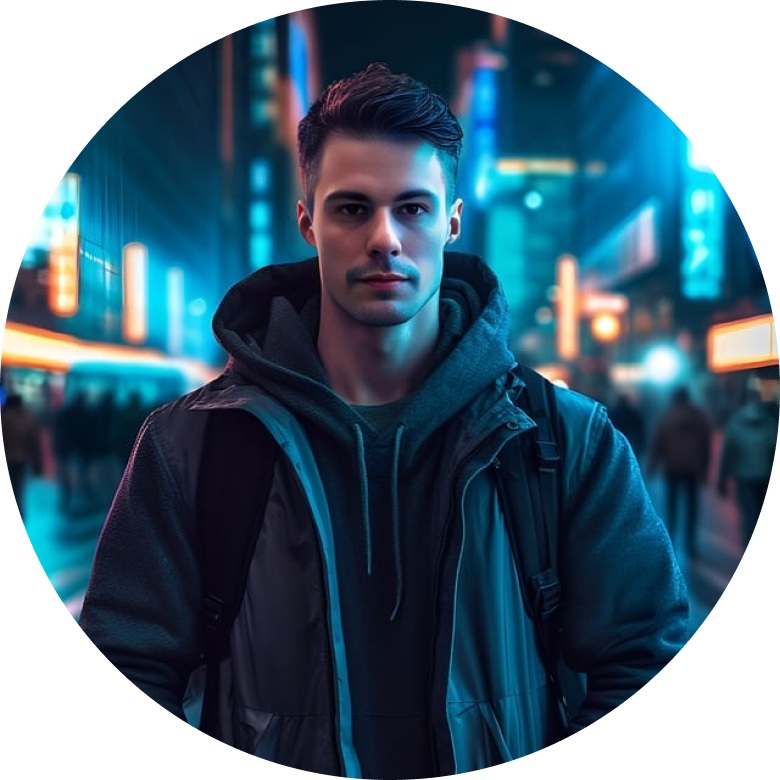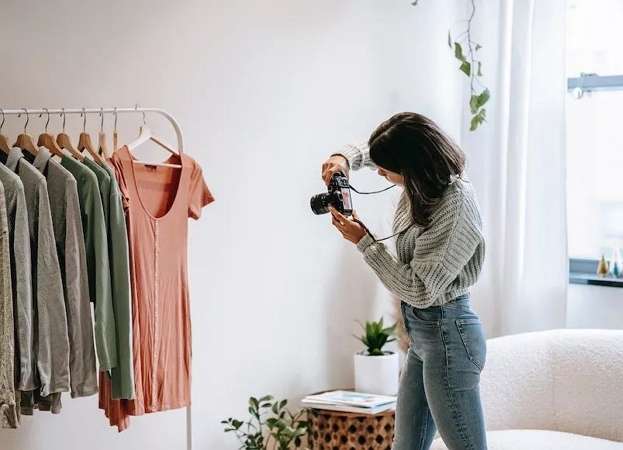Designers and clothing store owners need ways to drive sales. Because you are in a very competitive market, you must do all you can to stand out. Clothing photography, a genre of photography focused on taking visually appealing photos of garments, is the key to do. Admittedly, it is a little difficult to nail the formula. But don't worry. Here are some clothing photography ideas to help you out.
These great tips and ideas will allow you to take photos that make viewers want to wear the clothes you sell. They are updated to the latest trends, so you can rest assured they work.
In this article
Why Thinking about Clothing Photography Ideas Important?
Good-quality pictures of clothes can make a big difference in attracting and keeping customers. Whether you have an online store or a physical shop, clothing photography is important. However, it's understandable that you may get stuck in your old ways and find it hard to think of new ideas.
The photos of your clothes show what your brand stands for and reflect your values. They also display your personality and highlight your clothes' unique features, design, and style, setting them apart from your competitors.
New ideas and styles can often lead to more sales and higher revenue. Previously overlooked products might catch people's attention and make them interested. The fashion industry and customers' preferences and tastes are always changing. By incorporating the latest clothing photography ideas and trends into your product photography strategy, you can stay ahead of the game and appeal to a larger audience.
Read more: how to plan a photoshoot for clothing brand
Choosing the Right Photoshoots for Your Online Clothing Business
There are different types of photoshoots that online clothing stores can consider. Each type serves different purposes and can be used on various platforms. Knowing which type of image will attract more engagement on specific platforms is crucial for planning the clothing photoshoot effectively.
Here are some types of photoshoots for online clothing stores:
1, Lifestyle Photoshoot
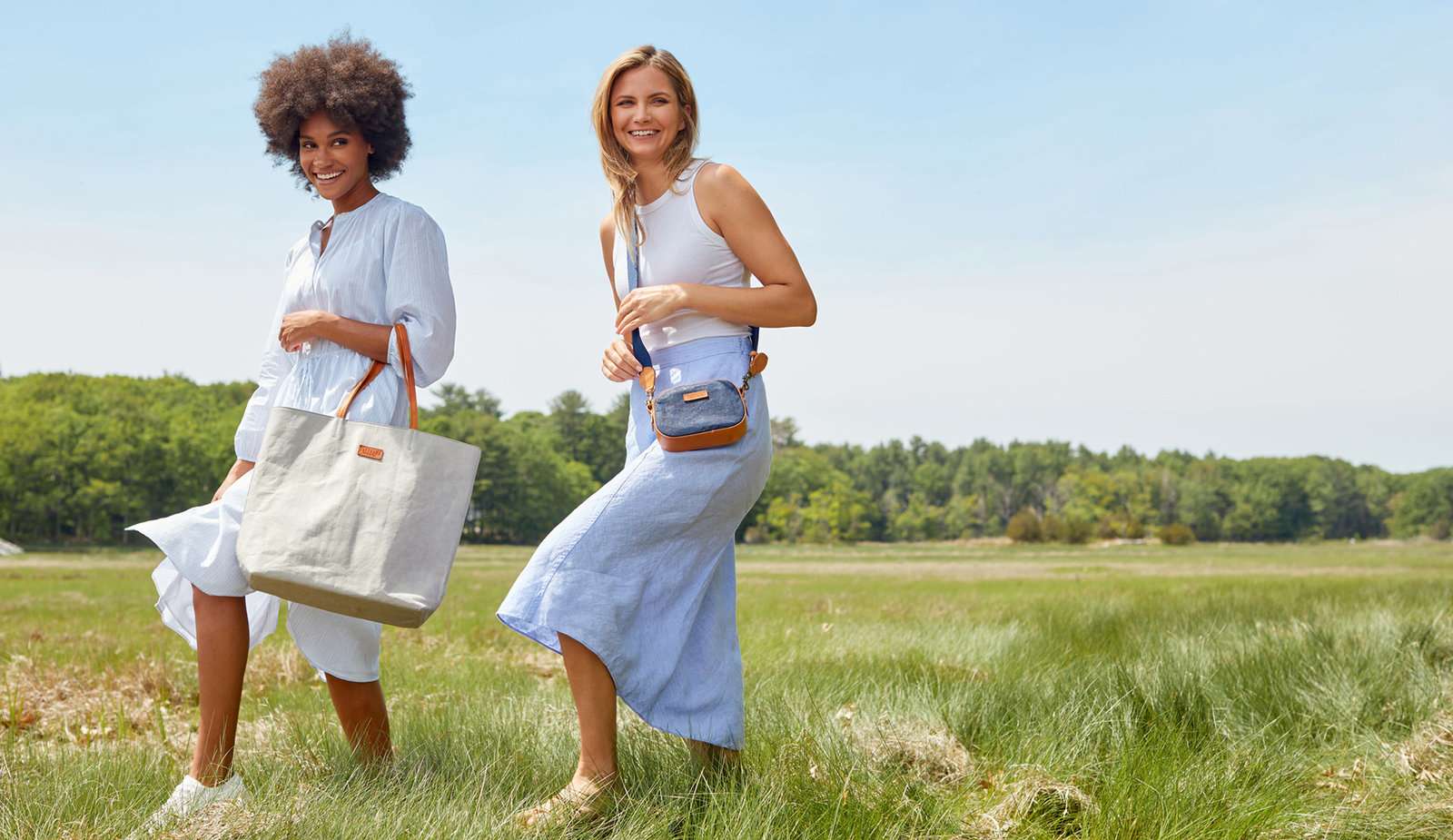
This photoshoot provides a realistic representation of the clothing products by featuring models wearing them. It aims to create a real-life image of the products and may include using authentic backgrounds to enhance the visual experience. Lifestyle photoshoots help customers visualize the product better, leading to increased engagement and sales.
2. Editorial Photoshoot
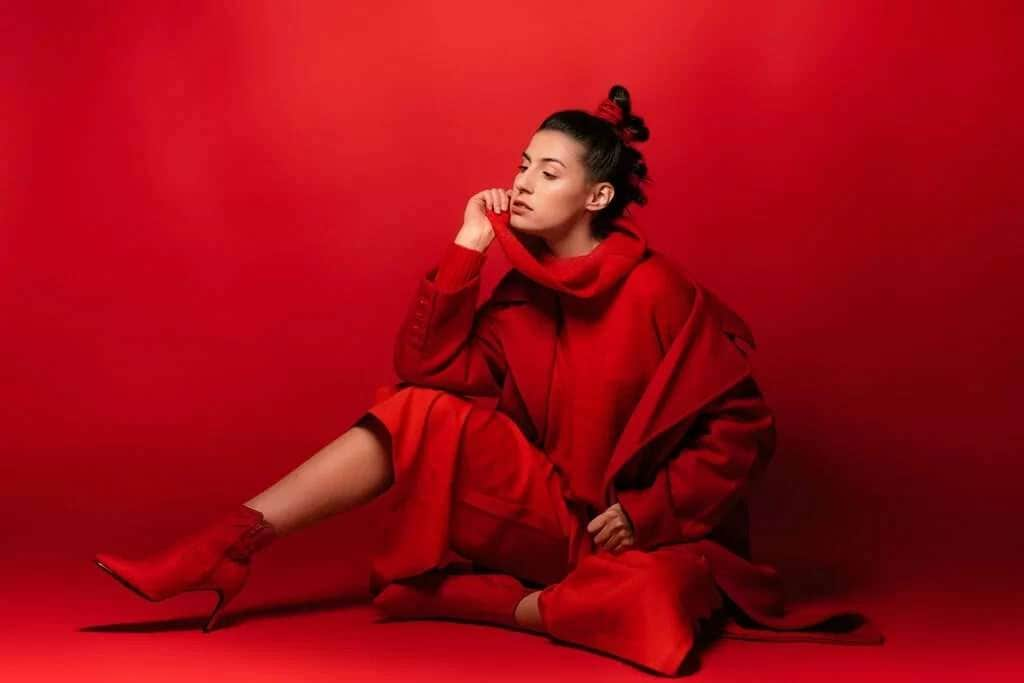
Editorial clothing photoshoots are designed for fashion magazines and usually revolve around a specific theme related to the clothing line. They require careful planning, execution, a higher budget, and skilled photographers to evoke strong emotions from viewers or customers. Established brands often opt for editorial photoshoots to maintain their reputation.
3. E-commerce Photoshoot
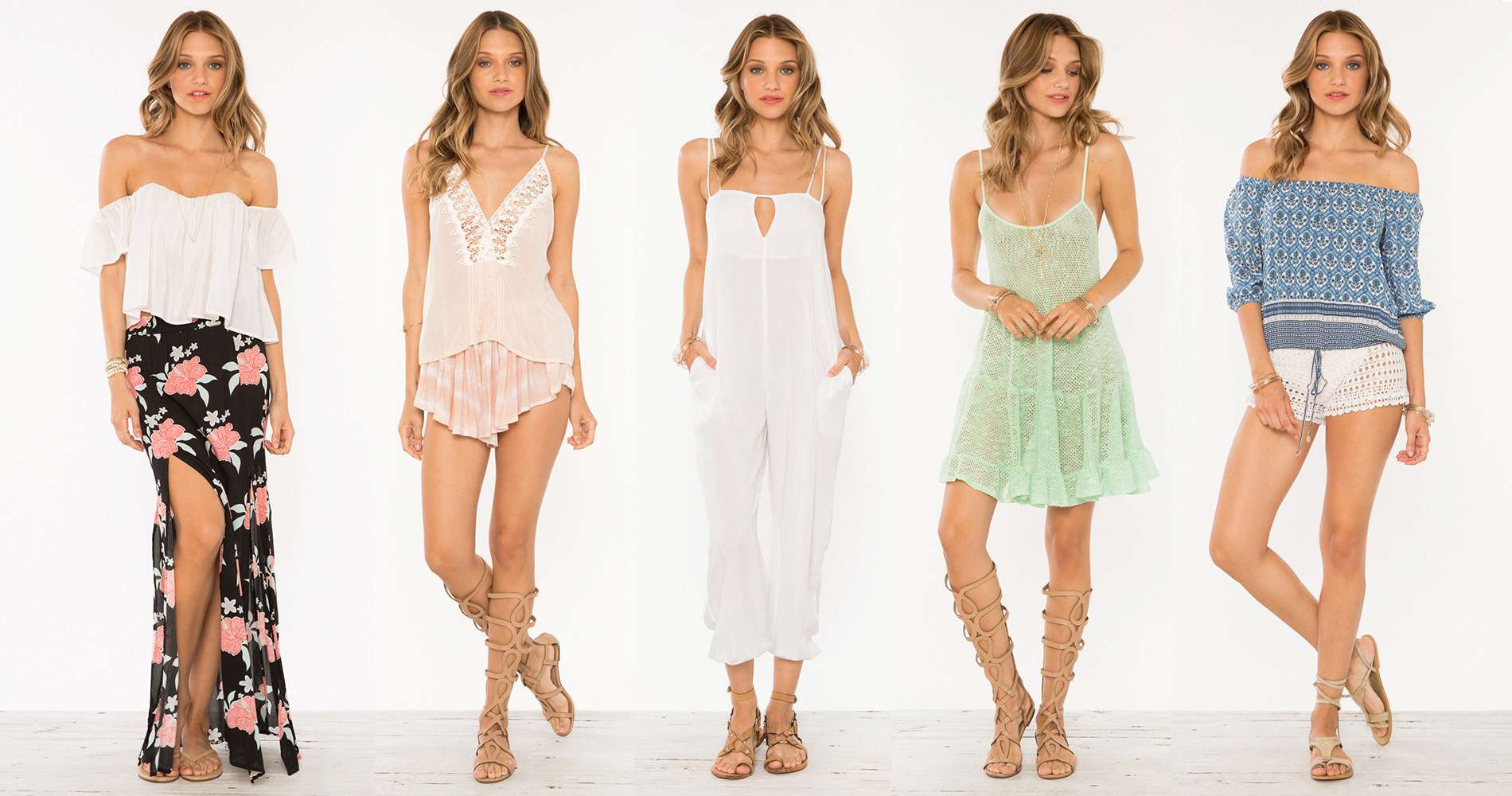
This type of photoshoot combines elements of lifestyle photography with carefully selected backgrounds. It involves featuring models like in a lifestyle photoshoot but capturing images against white or solid backgrounds. The main focus is representing the product and showing how it looks in real-life situations. It's important to brainstorm creative clothing photography ideas, set a budget, and hire models accordingly.
Read more: DIY backdrop for clothing photography
4. Photoshoot Against Background
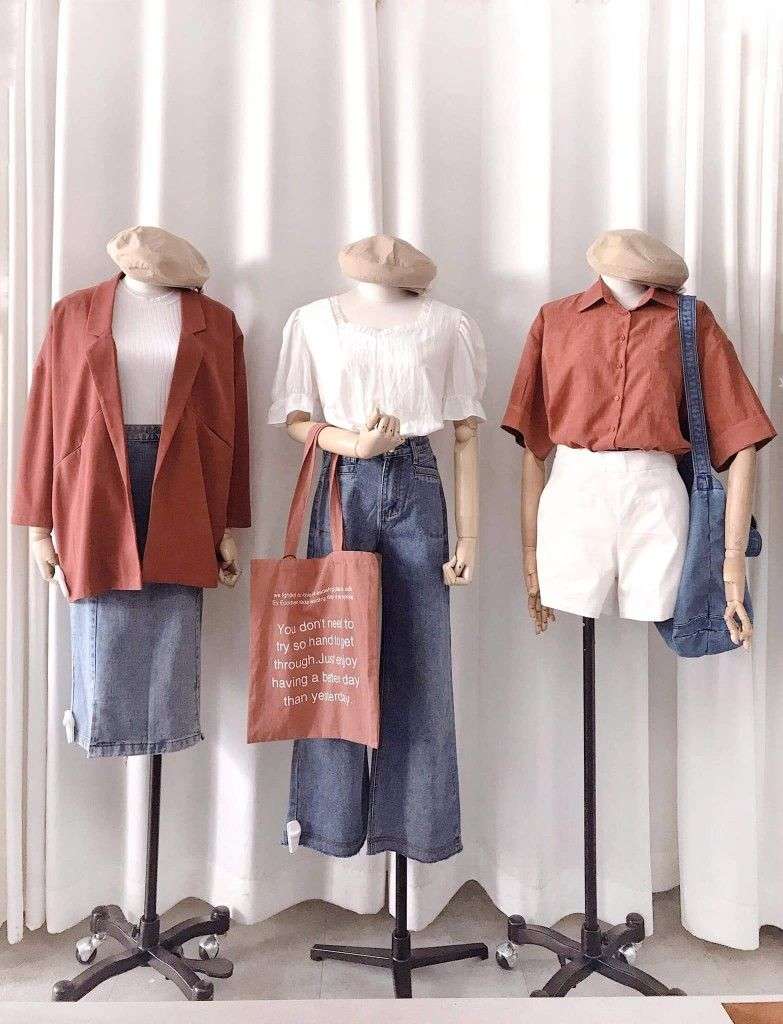
The clothing products are photographed against a white or uniform background in this photo shoot. Pastel or neon color backgrounds can also be used. White backdrops work best as they showcase the product's features. Pastel backgrounds are suitable for supporting images or dark-coloured products as they create a soft visual effect. Neon or bold-coloured backgrounds may distract from the product, but they can work well for bold or trendy clothing items.
7 Clothing Photography Ideas You Shouldn’t Miss
When it comes to taking pictures of clothes, there are a couple of ideas that you shouldn't forget. Here are two important things to think about:
1. Use the Right Camera Settings

Picking the right camera settings is essential for getting high-quality pictures of clothes. Adjust the right aperture, shutter speed, and ISO settings to ensure your photos are clear and detailed. Different settings can help you find the best balance of brightness and sharpness for your clothing pictures.
2. Choose a Good Background and Lighting
Properly selecting the right background and lighting are important for creating attractive clothing photos. Using a clean backdrop with neutral colors can make your clothes stand out and let customers focus on the garments themselves. Additionally, using soft lighting techniques like softboxes or natural light can eliminate harsh shadows and improve the overall appearance of your clothes.
3. Try Different Angles
Most clothing photos are taken straight-on, which can be a bit boring. Experiment with different angles. You can simply tilt the item or rotate it in different directions. Try a few different angles for each piece so that it doesn't look like all the items are the same when people see your collection.
4. Use an Invisible Mannequin
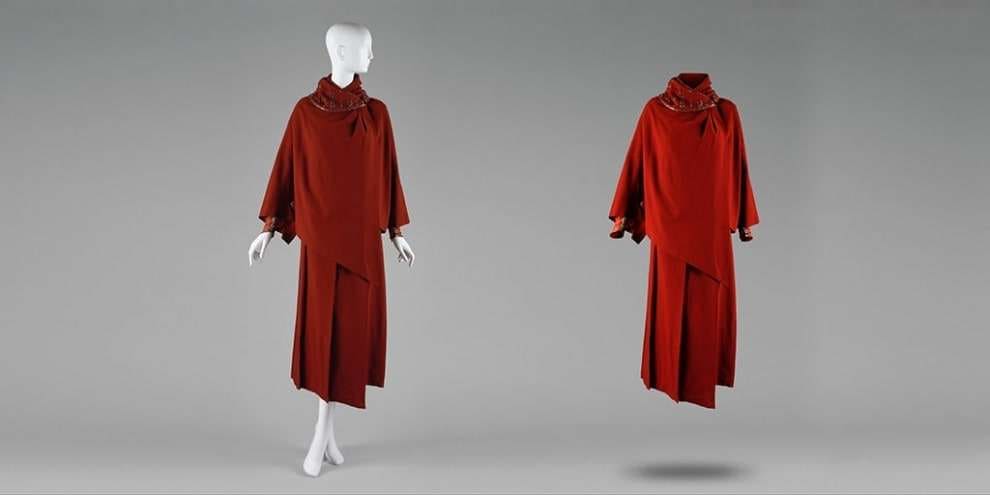
An invisible mannequin is just what it sounds like. It helps you display your clothes without showing the mannequin itself in the photo. This way, you can showcase the clothes naturally without any distractions from the mannequin. Using an invisible mannequin is also much cheaper than hiring models regularly.
You may also be interested in: how to take pictures of clothes without mannequin
5. Group Shots
If possible, taking group shots of your clothing items with multiple models is a great idea. These photos work well for website filler shots and allow you to show how the items look on different models. Viewers will better understand how the clothes will look on them and can imagine wearing them with friends and family.
6. Action Shots
People want to see the clothes on their own and how they look in action. Take action shots using models. Capture them doing various activities while wearing the clothes. It could be as simple as sitting and chatting with a friend or jumping shots to show how the clothes hang while moving quickly. Be creative with your action shots and consider your audience and the activities they might engage in.
7. Use Props
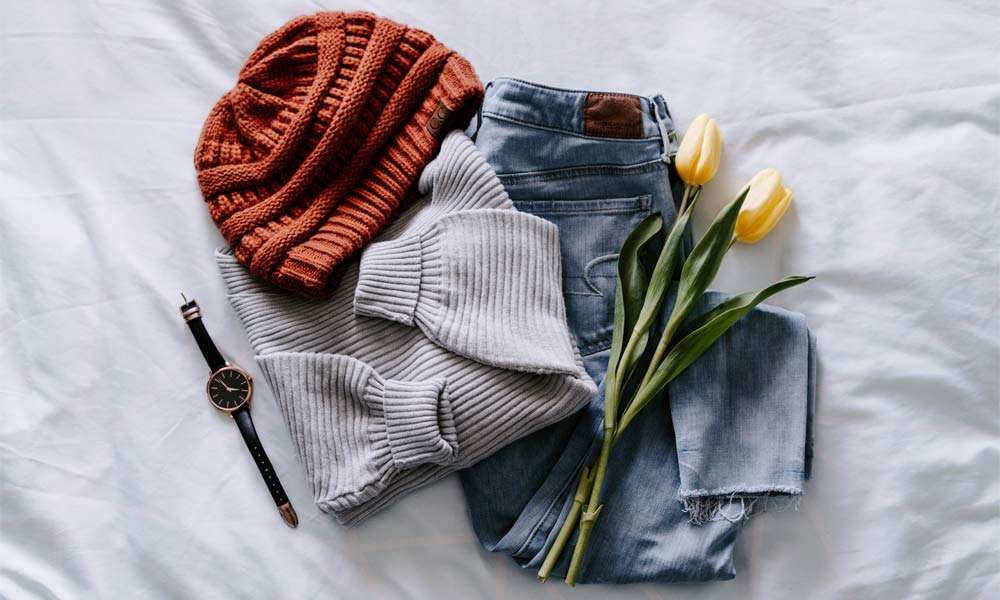
Don't hesitate to incorporate props when shooting traditional lay-flat photos. While simple background shots are necessary for many marketplaces, mixing props specific to your target audience is a great way to appeal to viewers. If you offer outdoor trekking gear, include camping props. If high fashion is your focus, include luxurious props. Using props to stage your products can present clothes interestingly and uniquely.
[NEW TREND] Integrating AI Product Photography Tool for Creating Stunning Clothing Images
Using AI technology in product photography is becoming increasingly popular in today's digital world. Product photography aims to capture attractive images of products, which are essential for e-commerce websites and printed catalogs. With the rise of online shopping, high-quality product photos have become important for businesses to differentiate themselves.
AI tools, such as Booth.ai, have revolutionized product photography by simplifying and speeding up the process. However, it's important to note that the results may not always meet expectations.
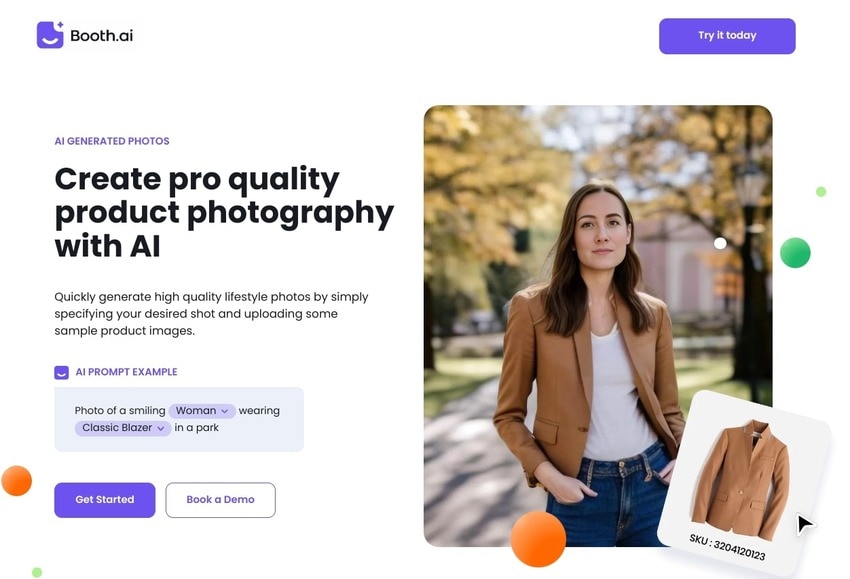
Booth.ai stands out as the best AI product photography tool, capable of producing top-notch product photos quickly. With just 3 clicks, you can generate stunning lifestyle pictures that effectively showcase your products, increasing sales and conversions.
Using Booth.ai is incredibly user-friendly. Its intelligent AI technology analyzes your uploaded images and creates realistic photos of your products in desired settings. The outcome resembles the work of a professional photographer. Moreover, booth.ai is completely free to use.
The platform is accessible to everyone. You can become a photographer and create captivating images of your products in just three simple steps:
- Step 1: Upload reference photos of your clothing product. You can also use the available products.
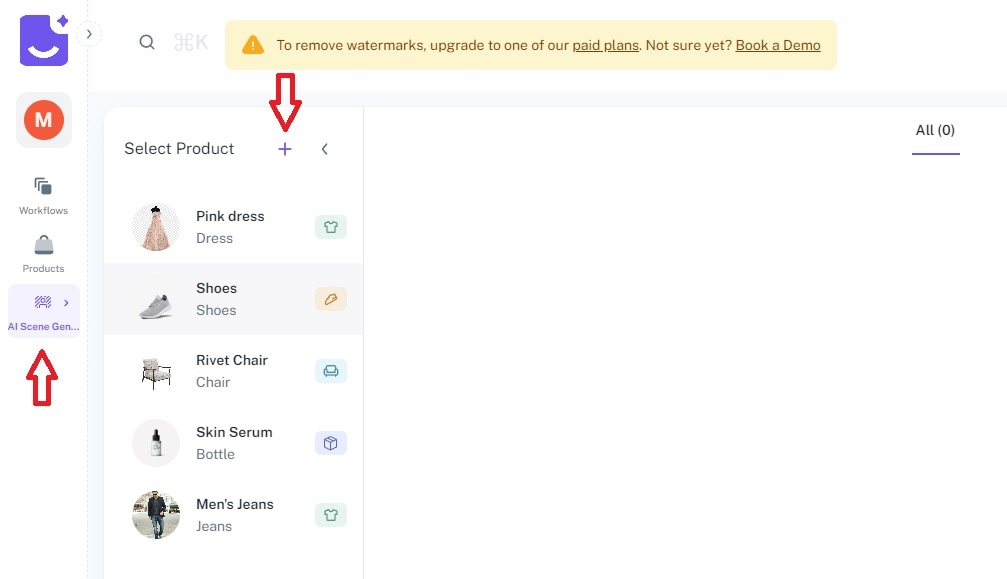
- Step 2: Describe your vision through a text prompt. Explore this tool as it visualizes what you want to do.
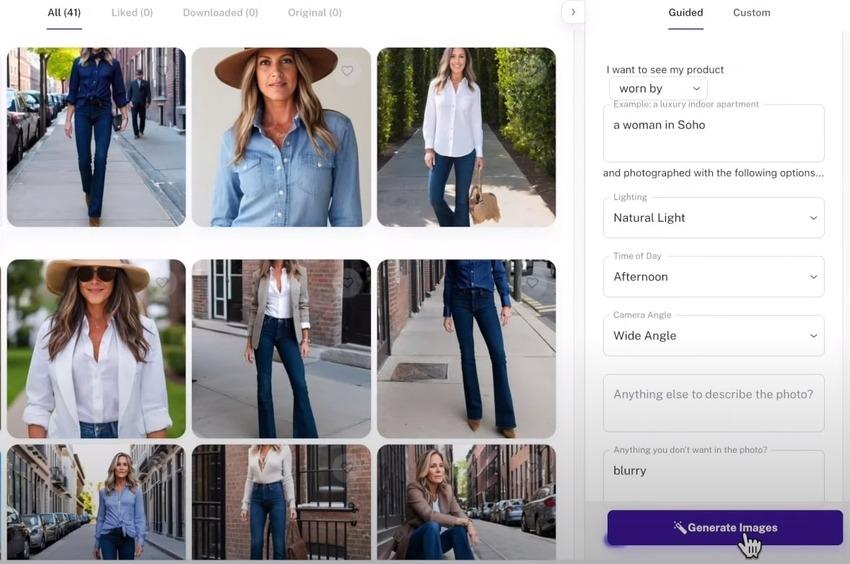
- Step 3: Receive the generated images within seconds.
Additional Clothing Photography Tips
Here are some additional tips for taking great pictures of clothes for sell:
- Use natural light: Take advantage of natural sunlight when taking pictures of clothes. Position your subject near a window or go outside during the day for nice, soft lighting.
- Get good equipment: Consider using a good camera and tripod to take clear, professional-looking photos. These tools will help stabilize the camera and make your pictures sharp.
- Pay attention to how you arrange things: Arrange the clothes in a way that looks pleasing to the eye. Think about balance, symmetry, and the empty spaces around the clothes to create attractive compositions.
- Add style and accessories: Pay attention to the details and add accessories to make the clothes look even better. You can use props, jewelry, or even put the clothes on a mannequin or model.
- Keep the focus on the clothes: Make sure the clothes are the main focus of your photos. Avoid distracting backgrounds and use a "shallow depth of field" technique to blur out any unnecessary details.
- Show different views: Display the clothes from various angles, such as the front, back, and sides. This will give customers a better idea of how the clothes look from different perspectives.
- Be consistent: Style and tone in all your clothing photos. This will create a professional and cohesive look for your brand.
- Learn from your experiments: Don't be afraid to try new things and learn from the results. Continuously improve your photography skills by reviewing and analyzing your photoshoots.
Conclusion
To sum up, creative and unique clothing photography ideas can make your products look more appealing and attract more customers. In addition, AI tools like booth.ai can simplify the product photography process and quickly generate high-quality images. These tools analyze and transform reference photos into stunning visuals, saving time and ensuring a professional outcome.
Combining these clothing photography ideas with AI technology can enhance your brand's visual presence, increase customer engagement, and boost sales.
